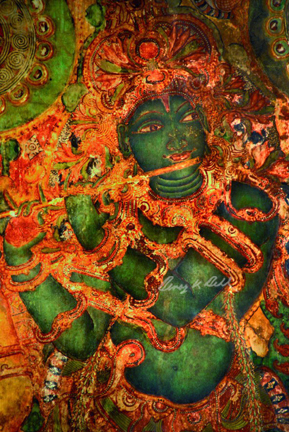The human form and deities in Indian art

Benoy K Behl
One of the contributions of the Indian philosophic streams is that there are no barriers placed between the spiritual world and the world of the senses. The art of this tradition is a fulsome sharing of the life experience, in all its aspects. It sees our perceptions, from the sensory to the highest realms of the spiritual, as a continuous path. It harnesses our faculties and perceptions to help us understand and reach out to the divine, through all our emotional and other resources.
This philosophy does not seek to deny our response to the splendour of the world around us. In fact, it sees this beauty as a reflection of the glory of the divine. Thus, the human form is not presented in a manner which would awaken base desires that burden us. Instead, Indian art recognises the grace in all human and other forms and seeks to elevate us through our aesthetic response.
Krishna, the word comes from the root of “Akarshan”, “attraction”. He is the personification of our attraction to the divine. It is most marvelous to see how Indian philosophic paths use the entire range of human emotions, to lead us always to that which is beyond. There is no denial of human warmth in Indian worship. Even our feelings of love are used to take us in a seamless path, towards divine knowledge.

